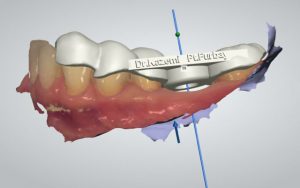Dental implants are now the most accepted and recommended way to replace missing teeth. Several recent technological advances have made dental implants increasingly more successful, longer-lasting, and the treatment of choice for patients who are looking for a replacement option that is the closest to their natural teeth.
are now the most accepted and recommended way to replace missing teeth. Several recent technological advances have made dental implants increasingly more successful, longer-lasting, and the treatment of choice for patients who are looking for a replacement option that is the closest to their natural teeth.
The first notable advance is the change in the design and surface characteristics of dental implants that have resulted in improved healing, stability, and longevity. The latest implants integrate better, preserve the bone and gum tissue more predictably, and support the overlying restorations more tightly which is why we have long-term success rates beyond 98%.
The second major advance is the utilization of cone beam CT scans (CBCT), optical scans, and computer-assisted planning in implant dentistry. We use Cone beam CT Scans to help us know exactly the amount and quality of the available bone and select implants with appropriate width and length for optimal integration and stability. CBCT scans also improve the safety of the implant procedure by localizing vital structures such as nerves and sinuses.
Utilizing dental optical scanners, we then produce a 3-dimensional digital impression of teeth and gum tissues. This digital impression is combined with the CBCT scan to create a complete image of the bone, gum tissue, teeth, and bite, which allows us to plan the treatment with extreme accuracy. Precise placement of dental implants, along with restorations designed with ideal form, provide better function and aesthetics, and simply last longer.
The third technological advance is 3-D printing and milling of necessary components at different stages of the treatment. Following the digital diagnosis and planning stage, an accurate surgical guide is designed and printed. This guide helps the surgeon to orient the implant exactly as planned with optimal predictability and safety. After the implant has healed, a digital impression of the dental implant is obtained using the optical scanner and is uploaded directly to the laboratory. The technician then designs and fabricates the abutment (the component that supports the restorations) and the final restorations using computer software and digital milling machines. The surgeon and the restorative dentist can now be assured that all components will fit perfectly.
Since we have incorporated these technologies into our dental implant practice, we have noticed consistently better and more predictable outcomes. Along with clinical expertise, proper surgical techniques, and detailed planning, technology makes us better dentists and enables us to deliver the results promised to our patients.
Dr. H. Ryan Kazemi is a board-certified oral surgeon in bethesda, MD specializing in dental implants.
